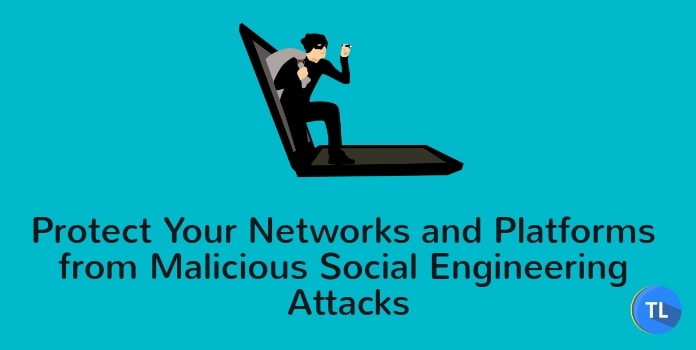Even though technological advancements have their benefits for the modern world, they present a fair share of challenges. One aspect that invokes concern is social engineering. Whether your networks are safe, malicious attackers will find a way of infiltrating and wreaking havoc.
These attacks aren’t exclusive to businesses; individuals have not been spared either. The world of social media is reeling from the aftermath of data manipulation, identity theft, cyberbullying and the list is endless.
Hackers will always come up with ways of manipulating and socially coercing individuals to submit sensitive info unknowingly. To stay ahead of these attackers, individual and enterprises need to consider a counter social kind of approach.
It’s the only way to keep the social media environment safe. There are new social engineering tactics that these attackers will use. It’s important to stay ahead with some of the following tips.
Table of Contents
1. Educate Yourself
Social engineering attacks tend to assume and exploit the psychological wellbeing of your personnel. Even though the network security is watertight, the human factor can be used to manipulate and gain entry. After implementing the firewall and encryption, there is need to educate your workforce.
When they are aware of possible threat forms, it’s easy to stay alert. If the workforce is aware of the thinly-veiled attempts, they can defend against them. It’s important to now the pretexts used by attackers. Often they seem genuine, but they can be used to get critical info.
2. Be Aware of the Information You’re Releasing
You and your workforce are likely to communicate normally verbally or through social media channels. It’s advisable to note that any entity looking to manipulate or syphon data will have done in-depth diligence on you.
Before you release any info or data, make sure you do your own comprehensive investigation into the authenticity of any request for information.
3. Determine Your Vulnerable Assets
When you concentrate on protecting your welfare as a business or individual, make sure your priorities are right. If you are protecting the wrong things and leaving the sensitive ones in the open, it can be disastrous.
An attacker will not go for the obvious; they will use the reverse tactic to find data or asset they can manipulate. It’s advisable to weigh what needs protection but doesn’t ignore some from face value.
4. Write an Awareness Training Policy
After marking out the data assets that need protection, you need to assess what interest attackers and the guise they are likely to use. As such, you need to have a security policy earmarking your preferred data protection priorities. This can be used as a blueprint for training your workers to be alert at all times.
If your staff is aware and they are reminded of possible pretexts all the time, it should be easy to spot an attempt before it leads to a disaster. Ignoring the need for awareness on a regular basis could lead to data leakage.
If anything, the attacker will always try to stay ahead. The idea is to avoid giving information even if it means refusal to answer the question in a well-crafted survey.
5. Keep Your Software Up To Date
The other method of entry that social engineering hackers exploit is your out of date software.
They will know whether you are using unpatched programs and strike. If you are proactive enough, keeping the software up to date is your best line of defence.
6. Be Stingy With Information
Whether you are communicating via social media posts or through phone calls, it’s advisable to check whether the person on the other end deserves your response. Often, you might feel pressures to answer questions.
If you take time to re-evaluate such a move, you will avoid leaking info that could be used to attack you. Don’t answer a question whose intention is to tell the kind of OS you operate or the kind of network security products in use.
